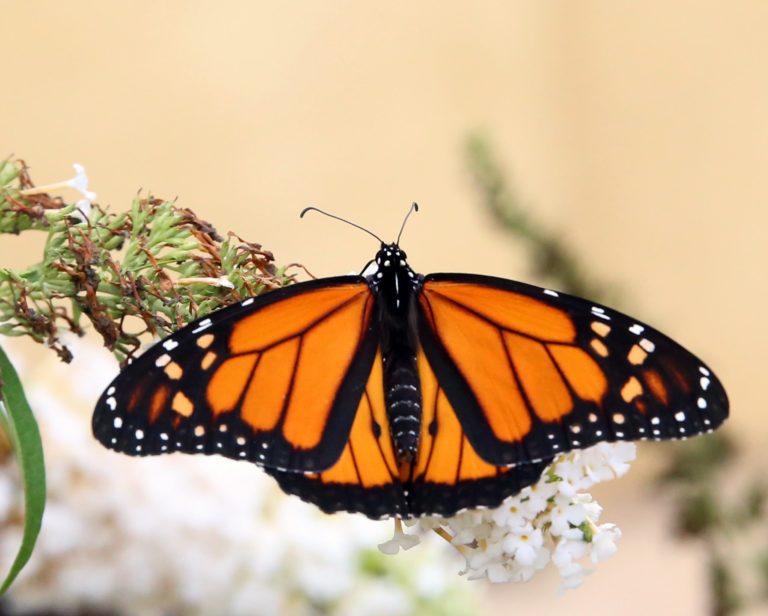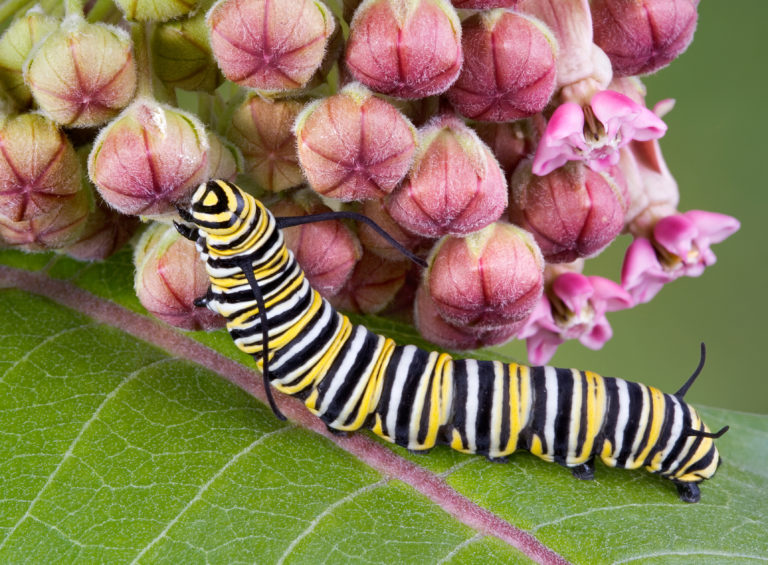Monarch butterflies are perhaps the most recognizable butterfly in the nation. They are indicators of a healthy environment and a healthy ecosystem. Each year they prove their remarkable resilience with a migration of 2,500 miles. However, their numbers are dwindling. Habitat loss, fragmentation, and the increase use of pesticides threaten Monarch butterflies. There may be hope with your help! Below are steps you can take to help the species thrive once again.
Plant milkweed
Milkweed plants provide Monarch caterpillars with the vital nutrients they need to go through metamorphosis. In fact, Monarch caterpillars only eat milkweed. Yet this crucial plant is disappearing because it is considered a weed. You can help by planting milkweed that is native to your area. If you find you have a green thumb and really enjoy gardening, feel free to add in other native plants. Native plant gardens are critical in sustaining a balanced ecosystem. They tend to be heartier, require less maintenance, and are a valuable source of energy for native insects and birds. If you don’t have enough space for a garden, put out a couple pots with milkweed in them.
Help scientists track Monarchs
Another way you can support Monarch butterflies is by helping scientists track them.


Tracking Monarchs allows researchers to study their migration patterns, timing, and habitat use. You can help track Monarchs right here at the zoo! On Saturday, September 28 from 1:00 pm to 2:30 pm you can join educators for an important citizen science program called Monarch Watch. Tag butterflies and get a firsthand look at their different life stages. The tags and tagging process do not harm butterflies and the information recorded from them is incredibly valuable in helping their conservation.
Help create rights-of-way
It is important to create rights-of-way for Monarch butterflies. Rights-of-way are channels that connect habitats. They include roadsides, distribution lines, railroad corridors, etc. Rights-of-way are like the roads we use to connect us to cities and towns, without them we would have a lot of trouble getting around. You and your community can plant milkweed, and other native flowering plants, along these passages to encourage the migration of Monarchs. Monarchs often do not have enough food along rights-of-way to make it through their entire migration. Cultivating healthy rights-of-way will help make sure no butterflies go hungry during their infamous trek. You can also reach out to your local municipalities to voice your concerns over a lack of healthy rights-of-way. Together, communities can help change the landscape for Monarch butterflies.
Written by Christa Fryling

